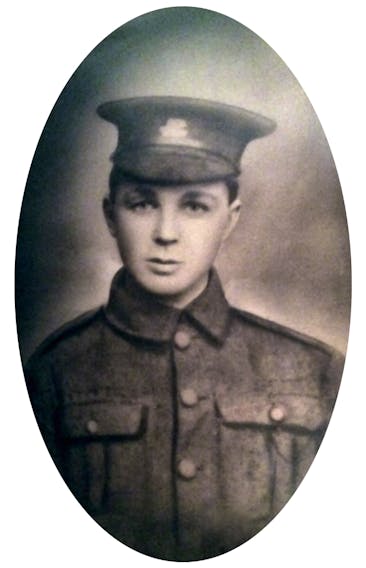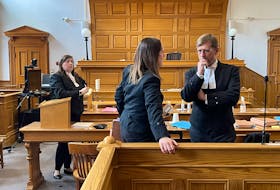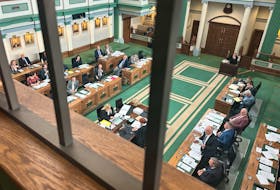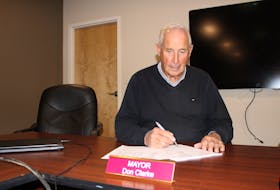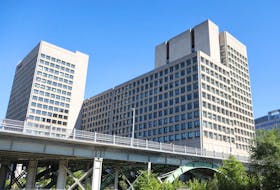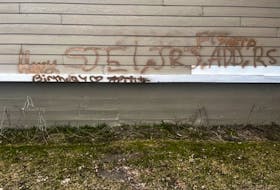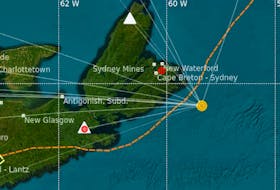The remains of a Royal Newfoundland Regiment soldier have been identified more than a century after he was killed during the First World War.
Pte. John Lambert of St. John's was just 17 when he died of wounds suffered during the Battle of Langemarck in Belgium, just about a year after he enlisted.
He was buried near the site of the battle, but his gravesite wasn't discovered until April of 2016, when four sets of human remains were discovered during an archaeological dig near Ypres, Belgium. Military identifiers discovered with the remains indicated three of the soldiers were British and that one, by the “NFLD” shoulder badge, was a soldier of the Newfoundland Regiment.

Belgian authorities contacted the Canadian Armed Forces’ Casualty Identification Program upon the discovery of the soldier. The Casualty Identification Program reached out to the Royal Newfoundland Regiment for assistance in finding the soldier’s descendants, and the Regiment then turned to The Rooms Provincial Archives.
DNA samples from the soldier’s descendants made it possible to confirm the soldier’s identity as that of Lambert. This is the first time a Newfoundland Regiment soldier has been identified using this process.
RELATED
Pvt. John Lambert's page at the Department of National Defence's casualty identification online site
Pvt. John Lambert's personnel file at The Rooms Archives
Provincial archivist Greg Walsh provided vital work in the effort to Lambert’s direct descendants to obtain that DNA.
Military records confirmed there were 16 Newfoundland Regiment soldiers who had fought in the vicinity at that time but had no known grave. Using the list, Walsh began a year-long search and proceeded to find living descendants for 13 of the 16.
He examined archival sources and collections, including vital statistics registers, census records, newspaper records, phone books, ancestry.ca, family search.org, attestation papers and nominal rolls, phone books, Canada 411, Facebook, Google, yearbooks, group photos of the regiment, birth/death/marriage records, and obituaries.
Walsh’s task was complicated by the fact the age on Lambert’s official documentation was incorrect. He was actually two years younger than indicated when he enlisted.

Lambert was born in St. John’s on July 10, 1900 and enlisted in the Newfoundland Regiment on Aug. 16, 1916. He lied about his age in order to enlist, claiming to be 18 years and three months old, when he was just 16.
Two weeks later, he was aboard the S.S. Sicilian, headed for Ayr, Scotland to join the second battalion of the Newfoundland Regiment. Lambert helped other soldiers train for battle for almost a year before it was his time to face combat.
On June 7, 1917, he joined the first battalion of the Newfoundland Regiment in Rouen, France, before a British offensive began northeast of Ypres on July 31, 1917.

Lambert waited with the Newfoundland Regiment for over a month for their turn in the fray. The 88th Brigade, which included the Regiment, made up the right flank of an attack on German trenches.
The attack was twice delayed due to heavy rain that soaked the ground and churned up unforgiving mud on the battlefield. Finally, on Aug. 13, the British forces made the charge over the trenches.
Newfoundland Regiment soldiers were able to keep up with the artillery barrage covering their attack and were able to advance over 1,100 meters to the German trenches. The Regiment overran the German trenches, completing all of their objectives in what would later be known as the Battle of Langemarck.
There were 103 casualties suffered by the Regiment that day, with 27 men, including Lambert, losing their lives.
On Sept. 29, 1917, a letter was sent to Lambert's family, informing them of their son’s fate.

Lambert's name was etched into the Beaumont-Hamel Newfoundland Memorial, to commemorate soldiers lost with no known grave.
Meanwhile, in the fields of Belgium, Lambert’s remains went undisturbed for almost 100 years until the archaeological dig.
It is believed Lambert and the other soldiers found with him were buried near the site of a field hospital and for unknown reasons, their remains were not found and recovered following the war.
“With casualty numbers as overwhelming as those of the First World War were, it can be easy to forget that behind every statistic was a Canadian or Newfoundlander who would never return home. Events like this remind us of that fact," reads a statement from Lawerence MacAuley, Minister of Veterans Affairs and Associate Minister of National Defense.
"Today, we honour Private Lambert, and all those men of the Newfoundland Regiment who gave their lives in service. Lest we forget.”

Lambert’s remains will be buried at the Commonwealth War Graves Commission’s New Irish Farm Cemetery in West-Wlaanderen, Belgium. Soldiers of the Royal Newfoundland Regiment, which carries on the tradition of the Newfoundland Regiment, will be on hand for the burial, to be held at the earliest opportunity. Members of Lambert’s family, representatives from the Government of Canada, the United Kingdom, and Belgium, the British, Belgian, and Canadian Armed Forces will make the trip to commemorate Lambert’s sacrifice at a later date.

